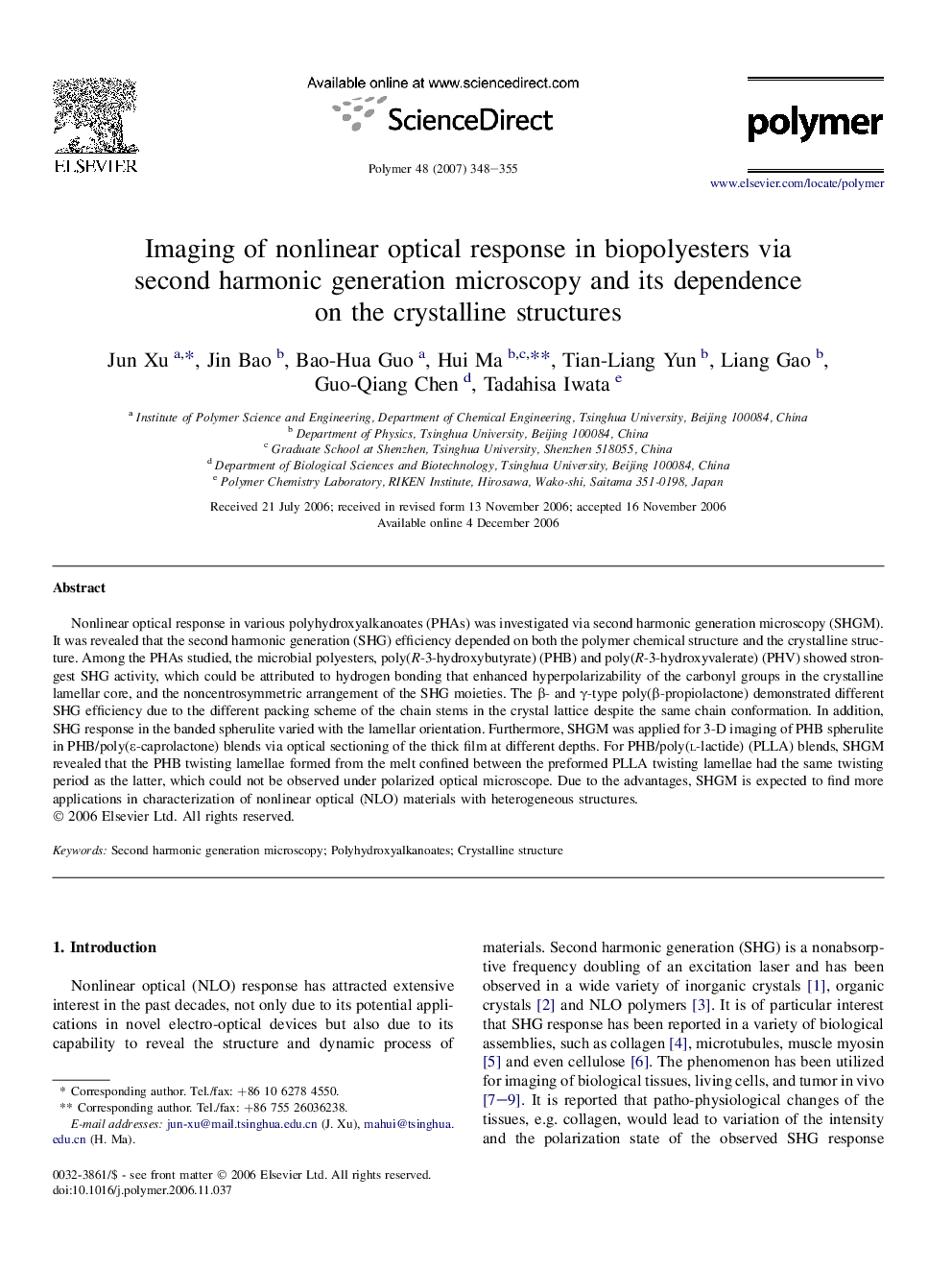| Article ID | Journal | Published Year | Pages | File Type |
|---|---|---|---|---|
| 5188288 | Polymer | 2007 | 8 Pages |
Nonlinear optical response in various polyhydroxyalkanoates (PHAs) was investigated via second harmonic generation microscopy (SHGM). It was revealed that the second harmonic generation (SHG) efficiency depended on both the polymer chemical structure and the crystalline structure. Among the PHAs studied, the microbial polyesters, poly(R-3-hydroxybutyrate) (PHB) and poly(R-3-hydroxyvalerate) (PHV) showed strongest SHG activity, which could be attributed to hydrogen bonding that enhanced hyperpolarizability of the carbonyl groups in the crystalline lamellar core, and the noncentrosymmetric arrangement of the SHG moieties. The β- and γ-type poly(β-propiolactone) demonstrated different SHG efficiency due to the different packing scheme of the chain stems in the crystal lattice despite the same chain conformation. In addition, SHG response in the banded spherulite varied with the lamellar orientation. Furthermore, SHGM was applied for 3-D imaging of PHB spherulite in PHB/poly(É-caprolactone) blends via optical sectioning of the thick film at different depths. For PHB/poly(l-lactide) (PLLA) blends, SHGM revealed that the PHB twisting lamellae formed from the melt confined between the preformed PLLA twisting lamellae had the same twisting period as the latter, which could not be observed under polarized optical microscope. Due to the advantages, SHGM is expected to find more applications in characterization of nonlinear optical (NLO) materials with heterogeneous structures.
